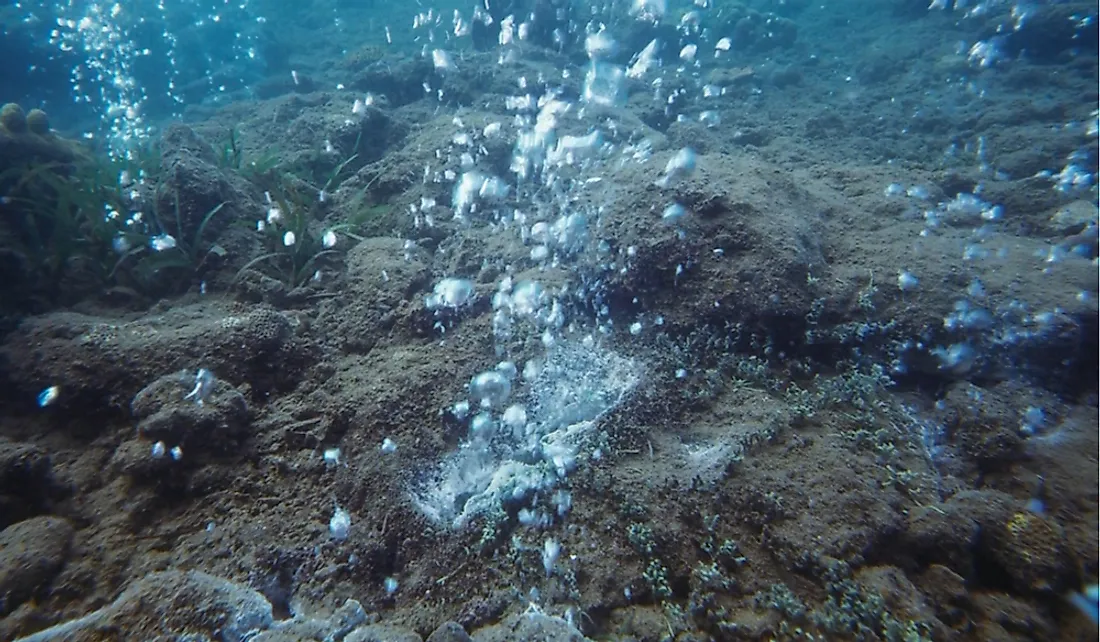What Is A Cold Seep?

A cold seep, also known as a cold vent, is a shallow area in the ocean floor where the leaking of hydrocarbon-rich fluid, especially methane and hydrogen sulfide, occurs, typically as a brine pool. Despite what its name might suggest, a "cold" seep does not mean that the fluid seeping through to the surface is colder in temperature than the surrounding water. In fact, the temperature of these fluids tends to be slightly higher than the surrounding water. The term "cold" is used since the seepage is cold relative to the very warm conditions of hydrothermal vents. A cold seep supports significant chemosynthetic communities, including endemic species, and may also lead to the development of a unique topography over time. The reaction between seawater and methane leads to the formation of carbon rocks and reefs.
Formation and Ecological Composition
In order for hydrocarbon-rich fluids to seep through the ocean floor to the surface, there must to a fissure or a vent. These fissures on the ocean floor are formed through tectonic activities. Once a fissure is formed, methane and oil seep out and become diffused by sediments, and finally emerge over a larger area. There are two types of cold seeps: shallow cold seeps and deep cold seeps. The different types of cold seeps can also be distinguished by their components and may include oil or gas seeps, gas hydrate seeps, methane seeps, brine seeps, mud volcanoes, and pockmarks. Methane, which is the main component of natural gas, is also the primary component of a cold seep ecosystem. Cold seep biota below 660 feet exhibit much better specialization than those from shelf depths. These biomes sustain different microbial and geochemical processes, as evident in the complex mosaic of habitats.
Distribution
Cold seeps were first discovered by American marine geologist Charles Paull in 1983 on the Florida Escarpment in the Gulf of Mexico at a depth of 10,500 feet. Since then, several cold seeps have been discovered throughout the world's oceans. Most seeps have been grouped into five biographic regions: Mediterranean, Gulf of Mexico, Atlantic, West Pacific, and East Pacific. With the discovery of a methane seep in the Southern Ocean, cold seeps have been identified in all of the major oceans. These seeps are normally found along the continental margins, where productivity and tectonic activities are very high. Most cold seeps are situated considerably deeper, beyond the reach of most scuba divers. The deepest seep communities have been identified in the Japan Trench at a depth of 24,035 feet. In addition to the cold seeps that exist today, fossil remains of ancient seep systems are also distributed throughout the world. In fact, some are even located on parts of land that were previously covered by prehistoric oceans.
Threats to Cold Seep Ecosystems and Communities
Major threats to cold seep ecosystems and their communities include contamination, seafloor litter, and climate change. Seafloor litters can lead to the development of a hard surface on the sea floor that may inhibit gas exchange or interfere with organisms at the bottom of the sea. Chemical contaminants, especially persistent organic pollutants (POPs), may also accumulate in the deep sea and impact local fauna. Climate change may also affect the frequency and intensity of the formation of cold seep ecosystems.











